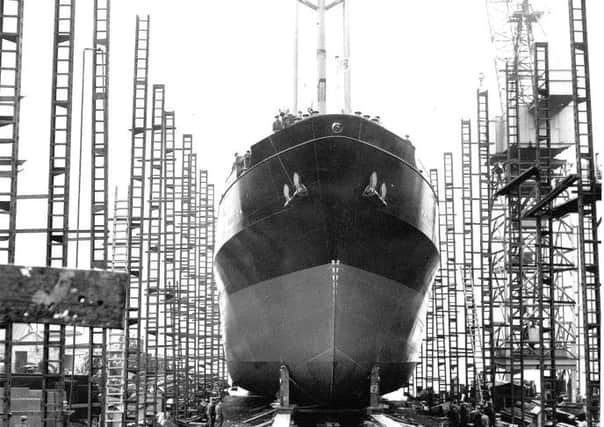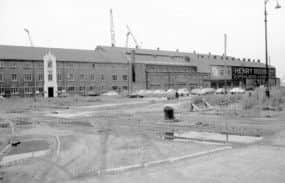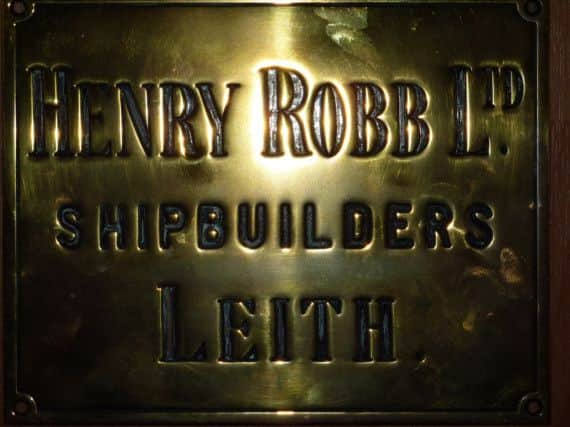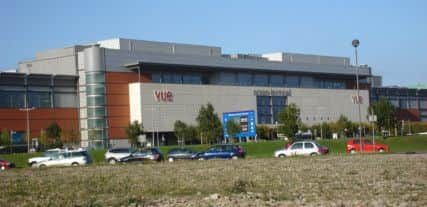Lost Edinburgh: Henry Robb Shipyard


Henry Robb Ltd was a successful shipbuilding company based in Leith between 1918 and 1984. At its peak, the shipyard was a celebrated Leith institution, providing hundreds of jobs for the area. The yard followed a strong tradition of shipbuilding in Leith which stretched back to medieval times. Over half a million tonnes of shipping was finished at Henry Robb’s – an impressive haul for a shipyard of its size.
Origins
The origins of Henry Robb’s shipyard can be traced back to the First World War. Mr Henry Robb had spent five fruitful years as yard manager for world-renowned Leith shipbuilders Ramage & Ferguson. Keen to progress, the entrepreneurial Robb made the bold decision in 1918 to leave his post and start a shipbuilding business himself. In its first year the new company focused almost entirely on the repair of vessels damaged in the maritime battles of WWI.


Advertisement
Hide AdBy the 1920s, business was booming for Robb and he began to dream of expansion. Fellow shipbuilders Hawthorn & Co based at Victoria Shipyard were taken over by his successful enterprise in 1924, followed by the purchase of expert tug-builders Cran & Somerville just two years later. Robb’s was fast becoming one of the largest yards in Leith.
The Great Depression era and further expansion
Heavy industries such as shipbuilding were hit hard during the global economic crisis of the early 1930s. Despite experiencing difficulties, Henry Robb Ltd endured. However, things didn’t pan out so well for their esteemed rivals Ramage & Ferguson. When they went into voluntary liquidation in 1934, Henry Robb capitalised and joined the two opposing shipyards. Access to lucrative world markets previously enjoyed by Ramage & Ferguson allowed the expanded shipyard to flourish like never before.
By the end of the decade Robb’s shipyard, boasting nine building berths and five dry docks, was able to produce a wide range of vessels from passenger and cargo ships to dredgers and tugs.


Efforts during WWII
During the Second World War, Robb’s produced a great number of warships, anti-submarine crafts, minesweeping trawlers, and large merchant navy vessels. Approximately 3,000 ships were also repaired by the yard as it made a pronounced effort to aid the Allied war effort. A morale boosting visit by King George VI and Queen Elizabeth in 1940 was a testament to the yard’s national importance.
Post-war decline
Despite the death of its founder in 1951, Henry Robb Ltd maintained its excellent reputation and continued to attract orders well into the next decade.


The company was renamed Robb Caledon Shipbuilding in 1968 after a merger with Caledon of Dundee. With shipbuilding in Britain under threat in the 1970s, Robb’s Leith yard remained open, but its days were most definitely numbered. Robb Caledon was one of 20 major shipbuilding companies to be nationalised by the Labour government in 1977, with the firm becoming part of British Shipbuilding.
Advertisement
Hide AdDue to a lack of orders, the Caledon yard at Dundee, like many others up and down the country during the Thatcher era, shut up shop in 1981. Ship building continued at Henry Robb’s Leith yard until September 1983 and ceased with the completion of the St Helen, Isle of Wight ferry. It had been the sole active shipyard on the Forth. Despite months of fierce protest marches by its 400-strong workforce, the shipyard was finally closed on June 1 1984. Leith’s once thriving shipbuilding industry was now a relic of the past. A fleeting role in the Proclaimers’ hit Letter from America in 1987, at least managed to immortalise the yard on film before it was pulled down forever.
Popular shoppers’ haven Ocean Terminal and the Royal Yacht Britannia now occupy the former site of Henry Robb’s famous shipyard.